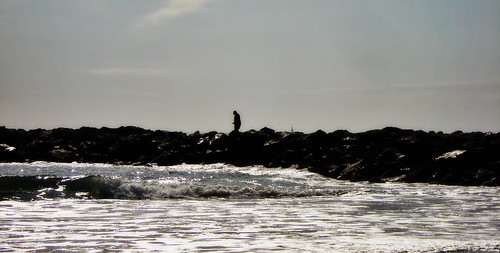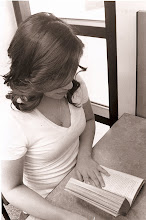Judith Butler says “social agents constitute social reality, through language, gesture, and all manner of symbolic social sign” (Butler 900). And this social reality has an immense effect on how society perceives gender. That being said, participants and consumers of social agents must be more wary of the messages that social agents are imparting. In the case of gender, many young children are socialized through the films and television that they watch. Through these programs children learn what it means to act like a girl or a boy. One agent of socialization that almost every American child is exposed to are Disney’s feature films. “They aren't simply cartoons,” Kathi Maio says in her article Disney’s Dolls, “they are symbols of the times -- and one company's measurement of how their target audiences want to see women” (Maio 12). What then are these film teaching children about gender? Upon reviewing these films with a critical eye, it becomes clear that several of them are riddled with female stereotypes. Overtime the stereotypes have changed according to society at the time of their release. Though these stereotypes are present, Disney films have slowly been evolving to stomp out anti-feminist ideals.
I will be discussing several Disney film and their relationship to feminism. Those Films include Snow White, The Little Mermaid, Beauty and the Beast, and Enchanted. The first three are animated features that exemplify the concept of the “Disney Princess” for many viewers, but each film is considerable different. The last mentioned film is a live-action and animation combination feature that incorporates these concepts into modern America.
It is important to note that of many of the Disney Princess films are named for their heroines. The animated films mentioned are no exception. These three films also physically describe the heroines as “white,” “little,” and “beauty.” This choice draws the viewer’s attention to the appearance of the heroine rather than her mental capacity, personality, or character. This is perhaps to draw the viewer’s attention away from the female stereotypes that Disney imbues within it’s female characters.
The 1937 release of Snow White lays the foundation for the Disney heroine, or Disney Princess as the corporation says. According to Maio, Snow White “set[s] a standard for full-length animation and established a pattern for later Disney heroines to follow. Snow White is young, virginal, pretty, sweet-natured and obedient. Domestic drudgery doesn't faze her since she is sure that a handsome owning-class chap will, someday soon, come and save her” (Maio 12). Snow White portrays the ideal characteristics of a woman at the time of its release. She is soft spoken, sweet, and submissive.
In the film, the beautiful Snow White is a threat to her stepmother who desires to be the fairest woman in the land. When the audience is introduced to Snow White she is making a wish for her “prince to come” and take her away. There is no hint that she is considering freeing herself from her situation with her stepmother. Further into the film Snow White comes upon the cottage of the seven dwarfs and decides that she will clean the cottage. According to Snow White the dwarfs are clearly lacking a mother and she assumes that role by cleaning and cooking for them. In her article, Rebecca-Ann Do Rozario makes a direct connection between the film and American history at that time to explain this. She says, “Snow White is the 1920s/ ‘30s starlet… [who] matures in the Depressions and is happy to pitch in with the working class dwarfs in times of high unemployment” (Do Rozario 38).
Throughout the film Snow White is unable to defend herself, her sole desire seems to be finding a man to love her, and the only skills she is attributed with are cooking and cleaning.

By the release of Disney’s The Little Mermaid in 1989, it was clear that the Disney Princess had undergone some changes. Ariel does make some challenges to the perception of the female heroine that Snow White establishes. In the opening of the film it is made clear the Ariel is something of a free spirit. She does not abide by the rules of her patriarchal underwater society. Libe Garcia Zarranz calls The Little Mermaid the “turning point signalling the studio's new openness in sexual and gender roles, since Ariel systematically rebels against the norm of the Father, aspires to grow intellectually and strives to achieve agency in the film” (Zarranz 57). Unlike her many sisters, Ariel seems to have a mind of her own. Rather than participate in the mandatory music recital Ariel spends her time admiring the world of the land dwellers.

While Ariel may not exhibit the traditional female stereotypes that Snow White does, she does exhibit stereotypes of a new generation. Early in the film the audience is made aware of Ariel’s obsession with collecting items once belonged to humans. In order to obtain these objects she knowingly places herself in dangerous situations, like searching for these items in shark infested waters. This behavior can be seen as akin to excessive shopping. Like Ariel’s dangerous obsession with collecting, women who excessively shop can be placing themselves in dangerous financial situations that sometimes reach the extent of bankruptcy. According to Zarranz, this compulsion make Ariel “the very embodiment of consumer-fetishism” (Zarranz 58 ). Later in the film, after Ariel has seen and fallen in love with Prince Eric, Ariel decides to alter herself in order to win his affections. This choice is analogous to a modern woman’s choice to receive cosmetic surgery in order to receive attention or approval from men.
Disney’s release of Beauty and the Beast introduced a new and improved heroine. Belle, unlike every previous Princess, is not perpetually concerned with finding a man and getting married. Belle’s passion is for reading, or intellectual development. Her central conflict is her dissatisfaction with the superficial nature of the town she lives in. Although viewers and feminists would see Belle’s preoccupation for reading as a good thing, the same cannot be said for her friends and neighbors. The inhabitants of her small town see Belle as a “funny girl” because she likes to read and is not in love with the town’s most eligible bachelor Gaston. Because of this love of reading and disinterest in Gaston, Zarranz says Belle is “for all intents and purposes, a Disney Feminist” (Zarranz 60). While Belle may be taking a step towards being the “new woman,” Disney decides to place her in a society that will negatively sanction her for these changes as opposed to embracing them.
As previously stated Belle’s initial aim in life is not to fall in love, but of course this is exactly what she does. Both Snow White and Ariel fall in love with their princes at first sight. In a more realistic fashion, Belle falls in love with the Beast over time. Of course because he is beastly in appearance, love at first sight would have been highly unlikely. That being said, it is also conceivable that Belle would never have fallen in love with him because of his appearance. . In her article Lara Sumera suggests that “Gaston is revealed as the true beast, the Beast is revealed as the one with the truly handsome character” (Sumera 42). In this respect, Belle challenges the one-dimensional and superficial nature of the Disney Princess.
Another interpretation of this aspect of the film gives a less favorable interpretation. If we were to examine the facts of this part of the film without the songs and fairytale, a few things become clear. First, initially Belle is a prisoner in the Beast’s castle. Second, Belle’s emotions towards her capture are originally fear and hatred. With that foundation laid it becomes clear that Belle’s new found love for the Beast can be caused by Stockholm syndrome. The young children that watch the film may not be able to recognize the irrationality of Belle’s love for her captor, but adults are able to recognize this. If a viewer were to adhere to this viewpoint, they might see Belle as a weak-minded woman. Whether or not this is true of those that suffer from Stockholm syndrome, having prior knowledge of this viewpoint will no doubt strip some of the “magic” in this love story.
The 2007 release of Enchanted is Disney’s step in the right direction. The film seemingly reverts to the Snow White concepts of the female. The heroine, Giselle is initially sweet, soft spoken, and submissive. She, like the early princesses, is preoccupied with love and marriage. As soon as she falls into the arms of Prince Edward she is overtaken by love.
Exactly like Snow White, she shows an affinity for cleaning with the help of animal friends. Disney’s portrayal of Giselle is that of a woman who is overly naïve and essentially helpless. Her story follows the cliché feminine ideals in order to satirize them. Disney is en essence poking fun at their past and signaling a move toward a new and improved princess. Giselle may start out as the quintessential submissive princess, but she becomes one of the very few that makes her own decisions about love and eventually is the one that saves the day.
Social agents are a product of their time. As revealed through these Disney films. Each displays the gender expectations and stereotypes of women during their production. Each film reveals something new and different when considering the female in the media. Each film also makes a small progression towards a more favorable and egalitarian portrayal of female characters. Though there is still some work to be done, Disney has come along way since its first Princess Snow White.
Works Cited
Butler, Judith. "Performative Acts and Gender Constitution." Literary Theory: an Anthology. Ed. Julie Rivkin and Michael Ryan. Malden, MA: Blackwell Pub., 2004. 900-11. Print.
Do Rozario, Rebecca-Anne C. "The Princess and the Magic Kingdom: beyond Nostalgia, the Function of the Disney Princess." Women's Studies in Communication 27.1 (2004). Contemporary Women's Issues. Web. 15 May 2010.
Maio, Kathi. "Disney’s Dolls." New Internationalist (1998): 12-14. Contemporary Women's Issues. Web. 15 May 2010.
Sumera, Lara. "The Mask of Beauty: Masquerade Theory and Disney’s Beauty and the Beast." Quarterly Review of Film and Video 20 (2009): 40-46. Academic Search Elite. Web. 15 May 2010.
Zarranz, Libe Garcia. "Diswomen Strike Back? The Evolution of Disney's Femmes In the 1990s." Atenea 27.2 (2002): 55-67. Academic Search Elite. Web. 15 May 2010.


Dude I really like your paper!!!!! =]
ReplyDeleteGood job!!!